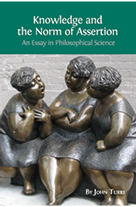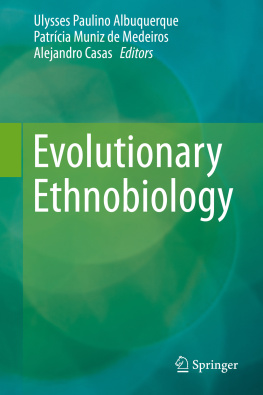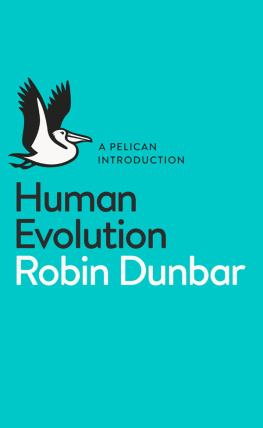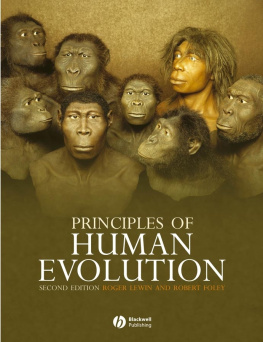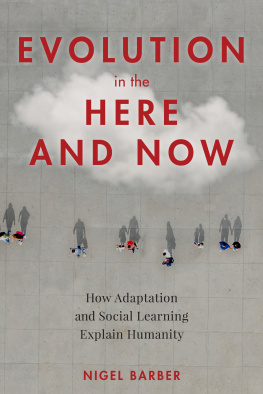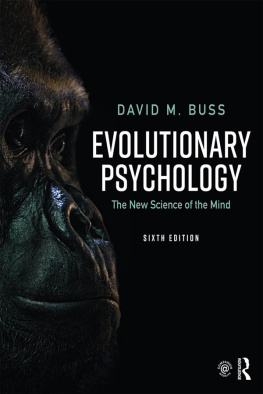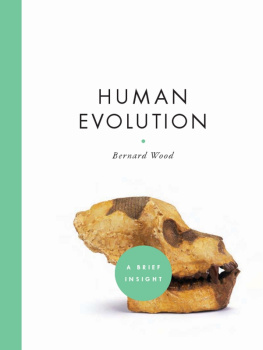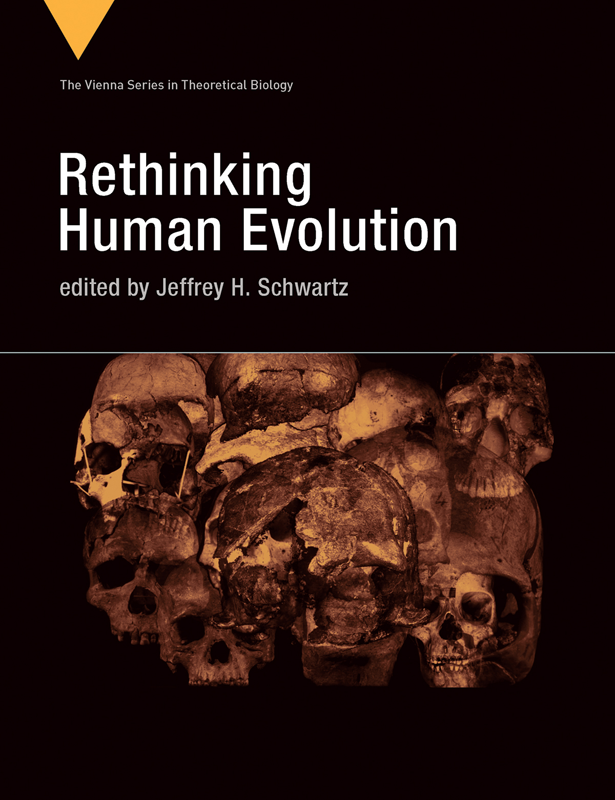Contents
Guide
Pagebreaks of the print version
Vienna Series in Theoretical Biology
Gerd B. Mller, editor-in-chief
Thomas Pradeu, Katrin Schfer, associate editors
The Evolution of Cognition, edited by Cecilia Heyes and Ludwig Huber, 2000
Origination of Organismal Form, edited by Gerd B. Mller and Stuart A. Newman, 2003
Environment, Development, and Evolution, edited by Brian K. Hall, Roy D. Pearson, and Gerd B. Mller, 2004
Evolution of Communication Systems, edited by D. Kimbrough Oller and Ulrike Griebel, 2004
Modularity: Understanding the Development and Evolution of Natural Complex Systems, edited by Werner Callebaut and Diego Rasskin-Gutman, 2005
Compositional Evolution: The Impact of Sex, Symbiosis, and Modularity on the Gradualist Framework of Evolution, by Richard A. Watson, 2006
Biological Emergences: Evolution by Natural Experiment, by Robert G. B. Reid, 2007
Modeling Biology: Structure, Behaviors, Evolution, edited by Manfred D. Laubichler and Gerd B. Mller, 2007
Evolution of Communicative Flexibility, edited by Kimbrough D. Oller and Ulrike Griebel, 2008
Functions in Biological and Artificial Worlds, edited by Ulrich Krohs and Peter Kroes, 2009
Cognitive Biology, edited by Luca Tommasi, Mary A. Peterson and Lynn Nadel, 2009
Innovation in Cultural Systems, edited by Michael J. OBrien and Stephen J. Shennan, 2010
The Major Transitions in Evolution Revisited, edited by Brett Calcott and Kim Sterelny, 2011
Transformations of Lamarckism, edited by Snait B. Gissis and Eva Jablonka, 2011
Convergent Evolution: Limited Forms Most Beautiful, by George McGhee, 2011
From Groups to Individuals, edited by Frdric Bouchard and Philippe Huneman, 2013
Developing Scaffolds in Evolution, Culture, and Cognition, edited by Linnda R. Caporael, James Griesemer, and William C. Wimsatt, 2014
Multicellularity: Origins and Evolution, edited by Karl J. Niklas and Stuart A. Newman, 2015
Vivarium: Experimental, Quantitative, and Theoretical Biology at Viennas Biologische Versuchsanstalt, edited by Gerd B. Mller, 2017
Landscapes of Collectivity in the Life Sciences, edited by Snait B. Gissis, Ehud Lamm, and Ayelet Shavit, 2017
Rethinking Human Evolution, edited by Jeffrey H. Schwartz, 2017
Rethinking Human Evolution
edited by Jeffrey H. Schwartz
The MIT Press
Cambridge, Massachusetts
London, England
2017 Massachusetts Institute of Technology
All rights reserved. No part of this book may be reproduced in any form by any electronic or mechanical means (including photocopying, recording, or information storage and retrieval) without permission in writing from the publisher.
This book was set in Times New Roman by Westchester Publishing Services. Printed and bound in the United States of America.
Library of Congress Cataloging-in-Publication Data
Names: Schwartz, Jeffrey H., editor.
Title: Rethinking human evolution / edited by Jeffrey H. Schwartz.
Description: Cambridge, MA : The MIT Press, [2018] | Series: Vienna series in theoretical biology | Includes bibliographical references and index.
Identifiers: LCCN 2017027095 | ISBN 9780262037327 (hardcover : alk. paper)
Subjects: LCSH: Human evolution.
Classification: LCC GN281 .R417 2018 | DDC 599.93/8dc23
LC record available at https://lccn.loc.gov/2017027095
In memory of Werner Callebaut
Contents
Richard G. Delisle
Siobhan Mc Manus
John de Vos and Jelle W. F. Reumer
Jeffrey H. Schwartz
Rob DeSalle, Apurva Narechania, Martine Zilversmit, Jeff Rosenfeld, and Michael Tessler
Alan R. Templeton
Michael D. Petraglia and Huw S. Groucutt
Peter J. Waddell
Fred L. Bookstein
Markus Bastir
Robin Dennell
Gabriele A. Macho
Thomas W. Plummer and Emma M. Finestone
Dietrich Stout
Ian Tattersall
Claudine Cohen
List of Figures
Paul Adloffs (1908) parallel tree, illustrating the unique, nonprimate origin of the human lineage.
Giuseppe Sergis (1908) polyphyletic tree and the intertwining of apes and various human populations.
Francis Crookshanks (1931) polyphyletic tree and the intertwining of the great apes and various human populations.
Theodor Arldts (1915) polyphyletic tree and the intertwining of various human populations, apes, and monkeys.
William Pycrafts (1925) parallel tree showing both modern-looking and primitive-like lineages giving rise to living human populations.
The analysis space of human genetics. There are three axes in the space and hence discrete octants. Most, if not all, human genetics studies go into a single point within the space. The Y axis represents whether a study includes a fossil sequence or not. The X axis represents whether the focus of the study is within a population or between discrete entities. The Z axis represents whether the analysis uses clonal markers (Y chromosome or mtDNA). The darkened part of the space is where phylogenetic trees are ontologically unsound.
Phylogenetic trees for the four chromosomal entities discussed in the paper. Data from the 1000 Genomes Project were used to produce the trees, and individuals were colored according to the 1000 Genomes lists for continent of origin.
Tanglegrams of the individual chromosomal trees paired for clonal markers (on the left; mtDNA and Y chromosomal DNA) and recombining markers (on the right; Chromosome 20 and X chromosome).
Bootstrap tree of combined Phase 1 1000 Genomes male dataset using TNT (Goloboff et al. 2008). Data from Phase 1 of the 1000 Genomes Project were used to produce the tree and individuals were colored according to the 1000 genomes lists for continent of origin. Purple = African American, Blue = Africa, Red = Asia, Green = Europe, and Orange = Central America. The trees were generated in TNT using a bootstrap (100 replicates) and only nodes with bootstraps greater than 85% are retained.
A. Phylogenetic tree constructed using TNT (Goloboff et al. 2008) using the top 1% SNPs that are Ancestral Informative Markers (AIMs) as defined in the text. Purple = African American, Blue = Africa, Red = Asia, Green = Europe, and Orange = Central America. B. Phylogenetic tree constructed using the TNT using the bottom 1% SNPs that are Ancestral Informative Markers (AIMs) as defined in the text.
The mtDNA haplotype tree from Cann et al. (1987), with the ancestral root inferred by mid-point rooting.
The three classes of models of human evolution simulated for an ABC analysis. M measures the amount of admixture of an expanding African population with archaic Eurasians. The double-head arrows in the Multi-Regional Model represent gene flow between Africans and Eurasians. Modified from Fagundes et al. (2007).
Inferences about recent human evolution based upon hypothesis testing with no prior model of human evolution using MLNCPA. The earliest event detected is an expansion out of Africa into Eurasia dated at 1.9 mya (million years ago), as shown by the thick arrow near the bottom, followed by two subsequent expansions of humans out of Africa. The thick arrows showing these subsequent expansions are overlaid upon the Eurasian human lineages to indicate significant admixture. After the mid-Pleistocene expansion, humans displayed significant gene flow among geographic populations, as indicated by the thin diagonal lines. There were additional expansions of human populations during the last 50,000 years followed by the establishment of gene flow among populations.



